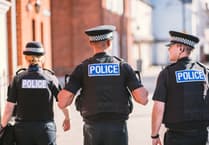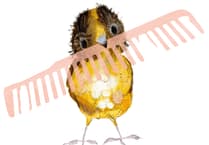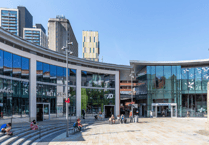PYRFORD’s Rowley Bristow Orthopaedic Hospital took its name from the once well-known surgeon who had worked at St Thomas’s Hospital in London.
Last week’s Peeps page told the story of how it had originally been a home for “waifs and strays”, founded in 1881 and run by the Church of England Children’s Society. In 1922 an orthopaedic hospital was added, and the organisation became known as the St Nicholas’ and St Martin’s Orthopaedic Hospital.
In this, the second part of the story, it was without doubt that after Rowley Bristow became associated with it in the 1920s, changes took place from it being an institution to becoming a very successful hospital.
Wards that were open on one side were added for the treatment of children who had contracted tuberculosis, as was an operating theatre and heated swimming baths. Long-stay children received education there that earned it special school status.
A 16-bed ward block was added in 1937, bringing the total number of beds to about 180. That same year adult patients were first admitted. Two-third of the hospital’s funding came from patient contributions with voluntary contributions making up the rest.
During the Second World War, most of the hospital beds were commandeered by the Emergency Medical Service for military personnel and also civilian casualties.
Rowley Bristow died in November 1947 and the hospital was named in his honour. With the advent of the National Health Service in 1948, The Church of England Children's Society arranged for the hospital to be transferred to it, and this took effect from 1 April 1950.
It was then under the control of the South West Metropolitan Regional Hospital Board. The number of beds had increased to a peak of 250 by 1948, but were steadily reduced in the years that followed.
In the postwar years many distinguished surgeons worked at the hospital who pioneered world-beating treatment for patients. With his self-taught knowledge of mechanical engineering, Gordon Hadfield designed and modified orthopaedic splints and instruments.
His light-weight Hadfield bed enabled patients being treated on lower limb skeletal traction to exercise and flex their knees. Another traction device he designed was used for the treatment of spinal curvature.
The famous champion jockey Sir Gordon Richards was once treated at the hospital. He dislocated a bone in his pelvis while riding the Queen’s horse, Abergeide, at Sandown racecourse on 10 July 1954. The Queen’s horse threw the 50-year-old jockey, which then fell on him. The press reported that surgeon Edward Slesinger said that it would be at least two months before Sir Gordon could contemplate riding again.
The Rowley Bristow Orthopaedic Hospital’s focus was to repair and construct bones affected by TB, polio and rickets, and also from accidents and war injuries. It became known throughout the world for its excellent surgery, research and nursing care.
The hospital closed in 1990, by which time the number of beds had fallen to 41, and its functions were then transferred to St Peter's Hospital, Chertsey.
For a while afterwards the grounds of the former hospital were used as a paintball war games centre. The site was then re-developed as a residential estate with St Nicholas Crescent and St Martins Mews.
If you have some memories or old pictures relating to Woking and its people, call David Rose on 01483 838960, or drop a line to the News & Mail.
David Rose is a local historian and writer who specialises in what he calls ‘the history within living memory’ of people, places and events in the west Surrey area covering towns such as Woking and Guildford. He collects old photos and memorabilia relating to the area and the subject, and regularly gives illustrated local history talks to groups and societies. For enquiries and bookings, please phone or email him at [email protected].




